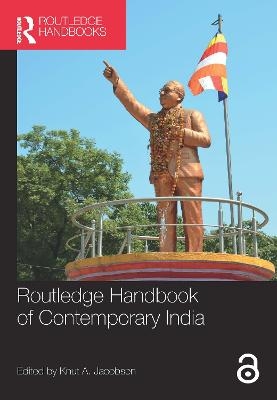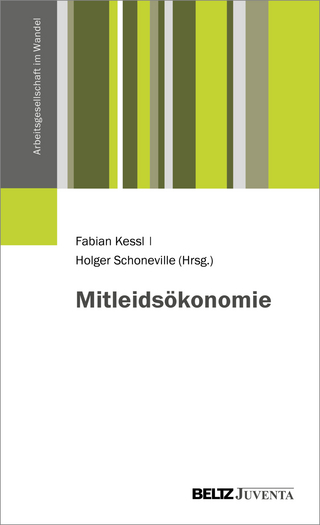
Routledge Handbook of Contemporary India
Routledge (Verlag)
978-1-138-31375-0 (ISBN)
- Titel ist leider vergriffen;
keine Neuauflage - Artikel merken
India is the second largest country in the world with regard to population, the world’s largest democracy and by far the largest country in South Asia, and one of the most diverse and pluralistic nations in the world in terms of official languages, cultures, religions and social identities. Indians have for centuries exchanged ideas with other cultures globally and some traditions have been transformed in those transnational and transcultural encounters and become successful innovations with an extraordinary global popularity. India is an emerging global power in terms of economy, but in spite of India’s impressive economic growth over the last decades, some of the most serious problems of Indian society such as poverty, repression of women, inequality both in terms of living conditions and of opportunities such as access to education, employment, and the economic resources of the state persist and do not seem to go away.
Now available in paperback, this Handbook contains chapters by the field’s foremost scholars dealing with fundamental issues in India’s current cultural and social transformation and concentrates on India as it emerged after the economic reforms and the new economic policy of the 1980s and 1990s and as it develops in the twenty-first century.
Following an introduction by the editor, the book is divided into five parts:
Part I: Foundation
Part II: India and the world
Part III: Society, class, caste and gender
Part IV: Religion and diversity
Part V: Cultural change and innovations.
Exploring the cultural changes and innovations relating a number of contexts in contemporary India, this Handbook is essential reading for students and scholars interested in Indian and South Asian culture, politics and society.
Knut A. Jacobsen is Professor of Religion at the University of Bergen, Norway. His previous publications include Yoga in Modern Hinduism: Hariharānanda Āraṇya and Sāṃkhyayoga, and Pilgrimage in the Hindu Tradition: Salvific Space. He is the editor in chief of the six volumes Brill’s Encyclopedia of Hinduism.
Introduction Contemporary India: Foundation, Relations, Diversity and Innovations Part I Foundation 1. Dreams, Memories and Legacies: Partitioning India 2. Symbiosis and Resilience: The Dynamics of Social Change and Transition to Democracy in India 3. Foundations for a Sustainable Growth: India’s Constitution and its Supreme Court 4. Economic Foundation of India 5. Equity, Quantity and Quality: The Precarious Balancing act in India’s School Education 6. Agriculture and the Development Burden Part II India and the World 7. Politics, Security and Foreign Policy 8. Is India a South Asian or an Asian Power? 9. India's Role as an International Development Actor 10. Dispersals, Migrations, Diversity of Communities and the Notion of an Indian Diaspora 11. Yoga and Physical Culture: Transnational History and Blurred Discursive Contexts 12. Modernised Ayurveda in India and the West Part III Society, Class, Caste and Gender 13. Politics of Economic Reforms in India 14. Divided We Stand: The Indian City after Economic Liberalisation 15. India’s Middle Classes in Contemporary India 16. Caste: Why Does It Still Matter? 17. Corruption and Anti-Corruption in Modern India: History. Patronage, and the Moral Politics of Anti-colonialism 18. Regional Perspective: Gujarat and the Contradictory Co-existence of Economic Enterprise and Political Illiberalism 19. Intimate Spaces of Struggle: Rethinking Family and Marriage in Contemporary India 20. Adivasis in Contemporary India: Engagements with State, Non-State Actors and the Capitalist Economy Part IV Religion and Diversity 21. Myth as History and History as Myth: The Instructive Case of India 22. Matters That Matter: Material Religion in Contemporary India 23. Hindu Pilgrimage Sites and Travel: Infrastructure, Economy, Identity and Conflicts 24. Ambedkar's Life and His Navayana Buddhism 25. Religion, Identity and Empowerment: The Making of Ravidassia Dharm (Dalit Religion) in Contemporary Punjab 26. Muslims in Contemporary India: Socio-religious Diversity and the Questions of Citizenship R. Santhosh 27. Religious Violence, Crime Statistics and India’s Muslim Minority 28. Christians in India: Living on the Margins with a Diverse and Controversial Past Part V Cultural Change and Innovations 29. Combative Constructions of Femininity in the Late Twentieth Century Narratives of India 30. The New Indian Male: Muscles, Masculinities and Middle-Classness 31. Changing Food Habits in Contemporary India: Discourses and Practices From the Middle Classes in Chennai (Tamil Nadu) 32. Coping with the Diseases of Modernity: The Use of Siddha Medical Knowledge and Practices to Treat Diabetics
| Erscheinungsdatum | 03.08.2018 |
|---|---|
| Zusatzinfo | 10 Tables, black and white; 2 Line drawings, black and white; 6 Halftones, black and white; 8 Illustrations, black and white |
| Verlagsort | London |
| Sprache | englisch |
| Maße | 174 x 246 mm |
| Gewicht | 934 g |
| Themenwelt | Sozialwissenschaften ► Politik / Verwaltung |
| Sozialwissenschaften ► Soziologie ► Allgemeines / Lexika | |
| Sozialwissenschaften ► Soziologie ► Spezielle Soziologien | |
| Wirtschaft ► Volkswirtschaftslehre | |
| ISBN-10 | 1-138-31375-0 / 1138313750 |
| ISBN-13 | 978-1-138-31375-0 / 9781138313750 |
| Zustand | Neuware |
| Informationen gemäß Produktsicherheitsverordnung (GPSR) | |
| Haben Sie eine Frage zum Produkt? |
aus dem Bereich


